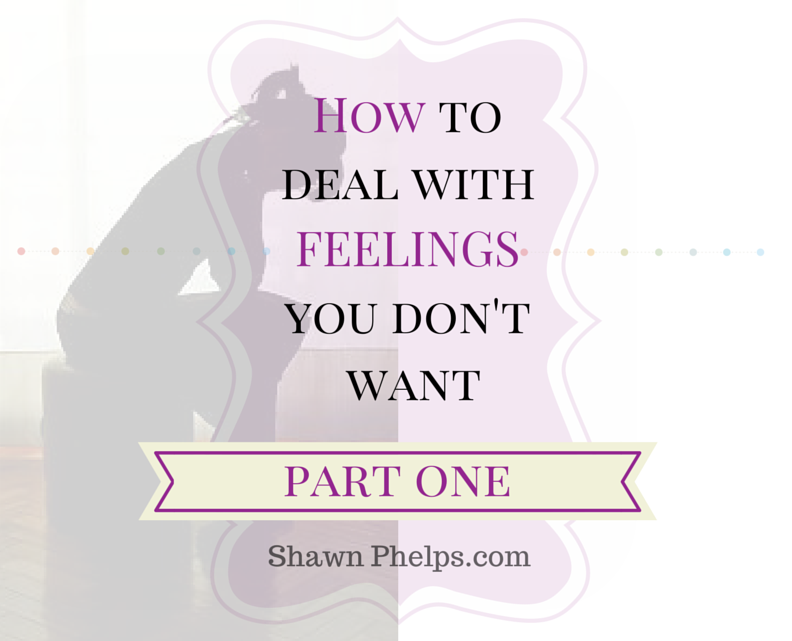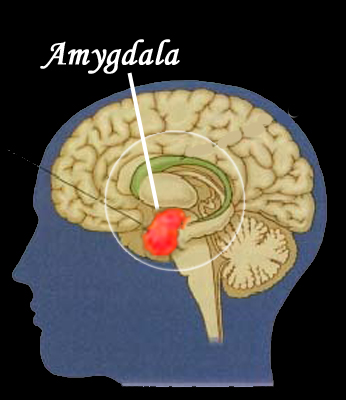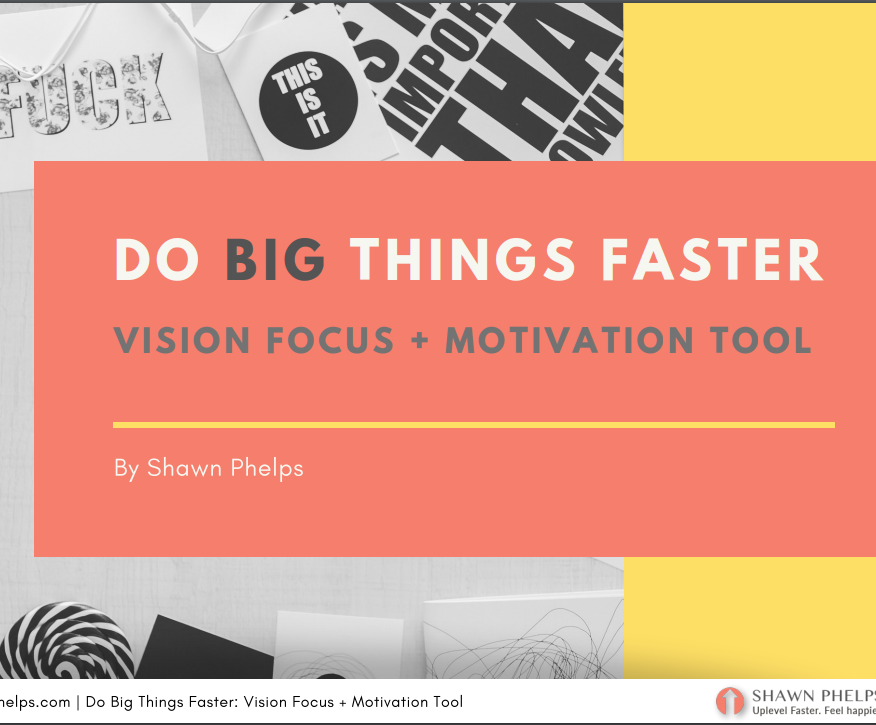Something is happening to you that you don’t want. Or something’s not happening that you really want. Either way, you’re stuck with a bunch of emotions you aren’t sure how to deal with.
Feelings You Don’t Want = Emotional Pain
I use the word “pain” here to mean any uncomfortable feeling you don’t want to feel. It could be frustration, sadness, anger, jealousy, resentment, fear, anxiety, hopelessness, restlessness, boredom, whatever—ANY feeling you don’t want to feel is a form of emotional pain. It creates suffering for you.
Odds are, you’re trying to numb it with food, booze, work, sex, TV, constant texting and other social stuff. But you’ve probably noticed that, just when you think you’ve finally ditched it, it reappears. You can’t hide from it. And positive thinking isn’t going to get rid of it.
If you want it to go away for good, you’re going to have to process it.
Pain is Useful Information
Most of us avoid pain, yet all forms of pain are just useful information telling us something about our experience. Physical pain alerts us that some part of our body needs attention; it may be bruised, broken or not working normally. Emotional pain is also sending us an alert: “Hey, something has happened that we are/were not okay with, and we have not yet processed, healed and released the experience.”
If an animal is hit by a car and survives, it will always shake itself off before running away. What is it doing? It’s releasing the intense fight, flight or freeze survival energy of that experience, like a reset button. As long as it does this shaking release, it will continue to live its life happily (assuming it was not injured too badly, of course). The energy was processed and released. If the animal doesn’t shake it off, it can remain traumatized and may even die.
Humans also experience these fight, flight or freeze moments, except we don’t know how to release them. Our ability to analyze things can also make this worse for us.
For example. If a seven year old boy is hit by a car (or, worse, by his father), he may subconsciously decide the experience means the world is dangerous and he must always be on hyper alert. This will be filed away in the amygdala (survival brain). Now, unless someone comforts him soon after (the equivalent of the deer shaking off the experience) and let’s him know that the world is mostly safe, he will go through his life with that belief. Everything he sees and does will be seen through that filter.
Every experience we have comes with an emotional attachment (unless you’re a sociopath, which I’ll address further down). When you encounter similar experiences in the future, it opens this attached file. That’s why small things can make you surprisingly angry. They can open up an old file with more anger (or sadness or whatever) stored in it.
Say Hello to Your Amygdala
Imagine your brain as a computer. The amygdala is your security program. Its job is to protect you from potential threats. Information and emotions that are deemed “safe” are let in—allowed to be processed, continuing on to other parts of your brain, where higher functions take place.
BUT, when something happens that is physically or emotionally painful (or even just confusing—children need their world to make sense to build a cohesive sense of self), the amygdala saves that in a special file to use as a reference guide for future threats. This works great for things like burning your hand on the stove. After you do it once, your amygdala will make sure you never do it again.
The real problems happen when your perceived value, safety and identity as your True Self are threatened (you are born with a unique personality, which wants to be expressed). If you are not loved and accepted for who you really are, the amygdala will store this as a threat.
For example, if a parent constantly compares you to the other children, implying they are better than you, the information that will be received and stored is “My True Self is not good enough; I need to be more like other people to be accepted. My best chance of survival includes being accepted by the tribe, so I must keep striving to be like other people.”
Now, “being like other people” has become a stored survival mechanism in your subconscious. And that is like a virus in your computer. Now you are programmed to self sabotage any attempts at living as your True Self. Ouch. And that’s only one of many glitches that can happen.
Worse, if the amygdala deems an experience and attached emotion as too emotionally painful or confusing for you to handle (hence threatening your chances of survival), that memory will get stopped and stored in the subconscious in a place where you cannot consciously access it. Unfortunately, this becomes a Trojan Horse in your computer. Those hidden viruses can cause serious havoc in your life—and the worst part is, you’ll have no idea why it’s happening.
Every person in the world is slightly different, and how our amygdala chooses to protect itself is part of what makes us all unique. We each have different physical traits including skin colour, and we each have different emotional and intellectual traits. Some of this is hereditary and some is just the constant slight mutations that happen in our DNA. But when it comes to our emotions and the filters through which we see and process the world, a lot of how we operate comes down to what we were taught and experienced during our formative years (and how our amygdala perceived that).
To survive somewhat hostile environments, the amygdala may choose to just disassociate certain memories and their corresponding emotions. It will always create coping mechanisms (which can become your “superpower”), such as in the case of many comedians—they learned to be funny because it disarmed their perpetrators and gained them approval; it was a protective tool that worked.
To survive extremely hostile environments, the amygdala pulls out the big guns. It may create a personality split or multiple personalities. It may just disassociate certain memories and their corresponding emotions. And sometimes it will just turn off the ability to feel most emotional pain, as in the case of sociopaths.
Dr. Jekyll vs. Mr. Hyde
 Wildmind’s blog shared a great post that used Dr. Jekyll and Mr. Hyde to illustrate how problems can unfold. In his example, Dr. Jekyll represents the neocortex and mammalian brain, responsible for self-monitoring, planning, advanced cognition, empathy, and compassion and Mr. Hyde represents the “reptilian” part of the brain, concerned with fight, flight, and fulfilling appetites.
Wildmind’s blog shared a great post that used Dr. Jekyll and Mr. Hyde to illustrate how problems can unfold. In his example, Dr. Jekyll represents the neocortex and mammalian brain, responsible for self-monitoring, planning, advanced cognition, empathy, and compassion and Mr. Hyde represents the “reptilian” part of the brain, concerned with fight, flight, and fulfilling appetites.
The point of the story is that when the neocortex is taught (either by caregivers or society) to feel fear and shame about the existence of the amygdala, it will repress and deny all the feelings and behaviours arising from the amygdala. And when you do this, these repressed bits will pop up here and there in undesirable ways (outbursts of anger, bouts of depression, etc.). If there’s a lot of denial, this part can grow into a real monster.
When the Brain Turns Off Emotional Pain (Sociopaths & Psychopaths)
Whenever I learn about a new serial killer, I always research their life story. I’m not morbid; I want to deeply understand why people hurt others. Usually, they were raised by caregivers who saw them mainly as an object to be manipulated to meet their own (twisted) needs. The child’s experiences often include continuous emotional abuse (shaming, humiliation, belittling), physical and sexual abuse, being completely ignored, or being exposed to random acts of violence.
This is where the “security guard” amygdala says…
People often cite Ted Bundy as an example of a serial killer who had a good childhood. They fail to mention that his father abandoned the family and he was told that his grandparents were his parents and his mother was his sister. When he learned the truth, he was devastated.
The thing people don’t get is that children need a consistent, supportive reality to develop into a mentally healthy adult. Just because they weren’t beaten, doesn’t mean everything was fine. He probably developed an attachment disorder because he did not form bonds with either parent before the age of five, and that opened the door first to sociopathy, then psychopathy. He likely inherited the sociopathic gene (perhaps passed down from his father). Once someone reaches that point you have to lock them up and throw away the key, because they are essentially an animal on the prowl for prey.
From the studies so far, sociopaths appear to be 50% genetic and 50% created by their environment. Although there’s a genetic component, if a child born with this gene has a consistent, supportive environment, is taught to have a strong sense of self, is able to form parental bonds, is shown empathy and is at least taught the concept and value of empathy, they may not develop into a full-blown sociopath, and more important, not into a psychopath. The real problems happen when a person with a sociopathic leaning develops resentment and anger toward an individual or at the world in general. If that happens in the first 10 years of their life, when their brain is still being formed, then they may become extremely dangerous, like Bundy.
Sociopaths vs. Psychopaths: An important distinction is beginning to be made between these two. Sociopaths can have a sense of morality, though it’s conceptual. This happens only if they were taught by a caregiver to think this way. They are not malicious and may even have a desire to see themselves as “good”. But it’s still not a smart idea to get on their bad side, because they can kill people and not feel bad about it. Remember that they are choosing not to. It’s a point of pride for them that they could kill people but they don’t. They value their own self control.
Sociopaths do have feelings, but they’re more dull or “flat” than what most people feel. This is why they can appear so rational–they’re unhindered by worries of what other people think. It’s also why they have a high need for stimulation—sex, risk taking and adrenalin thrills. It’s the only way they get to feel alive. Some can experience bouts of rage. Their amygdala (survival brain) is more developed and the connections with the pre-frontal cortex (which modulates things like thrill-seeking and allows for empathy) is less developed.
They are very rational, and see themselves as being shaped by their choices (which, to a large extent, is true for all of us!). They will still enjoy manipulating people (their brains are built that way), but they may channel this toward a career where these skills help them excel. They have very little true feelings for others, which makes it hard for them to not treat people like objects to be manipulated and managed. They definitely live life on their terms. The only rules they follow are their own.
While a sociopath may want to experience love, the closest they can come is lust + companionship, preferably with someone they consider loyal and interesting. It rarely lasts because they find other people’s emotions annoying and other people find it tough to stay with someone who is incapable of caring about how they feel. They can have friends if they are able to follow a consistent moral code (their own) that at least respects others on a conceptual level, but those friends will need firm boundaries because even a well-meaning sociopath is wired to get the most out of any situation. For them, friendships are about how you make their life either easier or more interesting, though a rare few may also help others, not because they have empathy, but because they want to see themselves as fair and good (and also because they know it’ll cause you to feel more loyalty toward them, which may come in handy some day).
When the Brain Turns Up Emotional Pain
Post traumatic stress disorder (PTSD) happens when this security program is put on a constant state of high alert (such as living with constant abuse as a child, or during a war), so it can no longer tell the difference between real and perceived threats. Not only will it likely hide the memories of those experiences from you, but it begins treating almost everything a threat.
As someone who lived with PTSD for most of my life (I have processed a good chunk of it now), I can tell you that this causes your body to be constantly flooded with stress hormones. This led me to have an autoimmune disorder by the time I was 31. (It took me eight years to heal it; and my main tool was mindfulness meditation, which dramatically lowered my stress response).
How Do I Get Rid of Emotional Pain Once and For All?
The answer is simple in theory, yet difficult in practice. Rather than denying or repressing the parts of ourselves we dislike, we need to bring them into full consciousness, without any judgment of them. Once we do that, they will finally be released from storage, pass through the security gates of the amygdala and be processed like any other experience/emotion.
I can tell you from personal experience, that, as each old unprocessed emotion finally passes through, it’s like losing 20 pounds of emotional weight. And you never gain it back.
But How Do I Do That Exactly?
There are a few different ways to chip away at this problem (sadly there’s no fast track, but there are shortcuts), and they all revolve around uprooting the stories we subconsciously told ourselves about our experiences and the emotions that were stored.
In the next few posts I’m going to show you the tools I’ve personally used to help myself and my clients get the best results.
Unfortunately, I can’t teach you the main tool I use to help my clients understand their amygdala’s unique defences—because it’s my intuition. While a couple of the practices I’ll share with you will definitely increase your intuition, it takes years of practice (and/or a natural-born ability) to use it effectively.
Anyway, as any honest intuitive will tell you, it’s very hard to use that tool to get past your own amygdala’s defenses (remember, it believes your survival is at stake). When I need guidance, I can usually download some insight into myself, but I also turn to the tools I’m going to share with you. If I’m feeling really frustrated and want a shortcut, then I consult with another intuitive!
So, in the next few posts I’ll teach you the top tools I’ve personally used to help myself and that I also teach to my clients, so they can clear those old emotions themselves.
Stick around. If you’re serious about stepping into the power of your authentic self, this is going to be epic.





